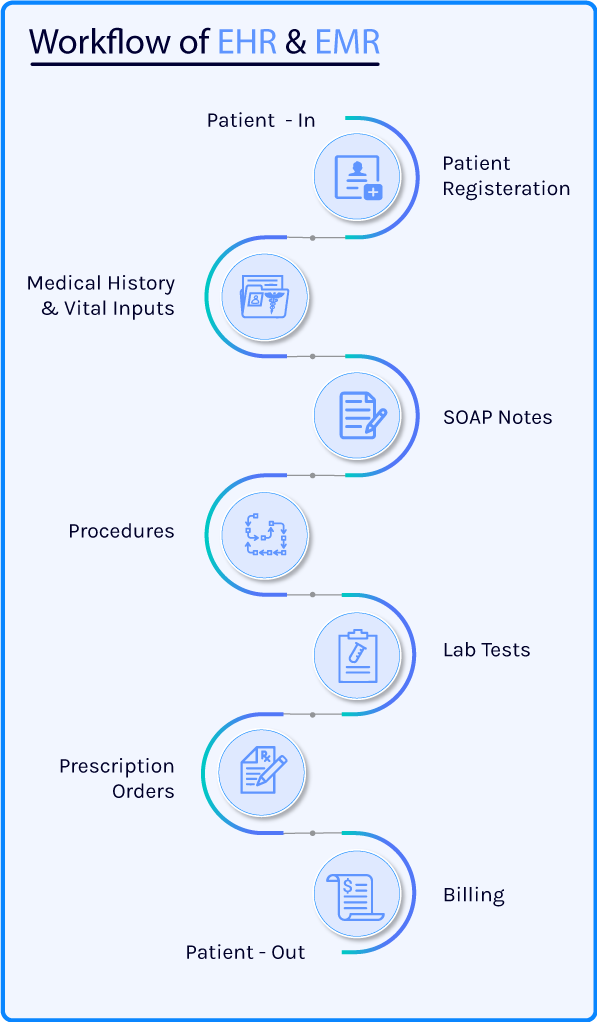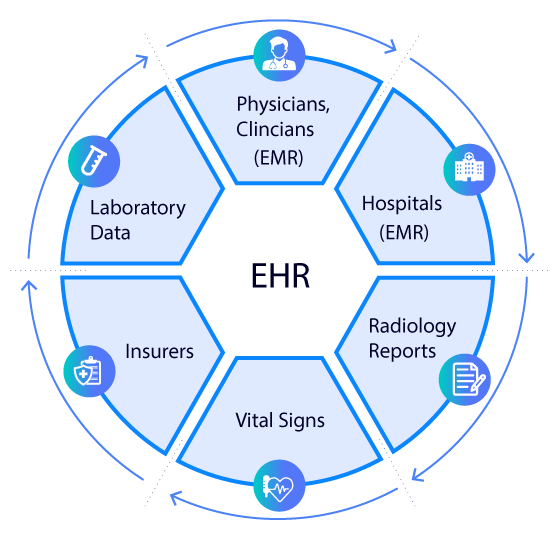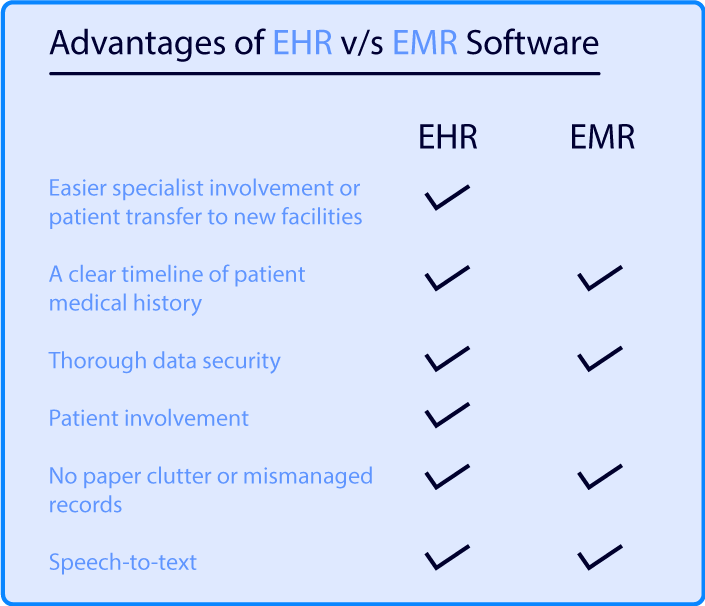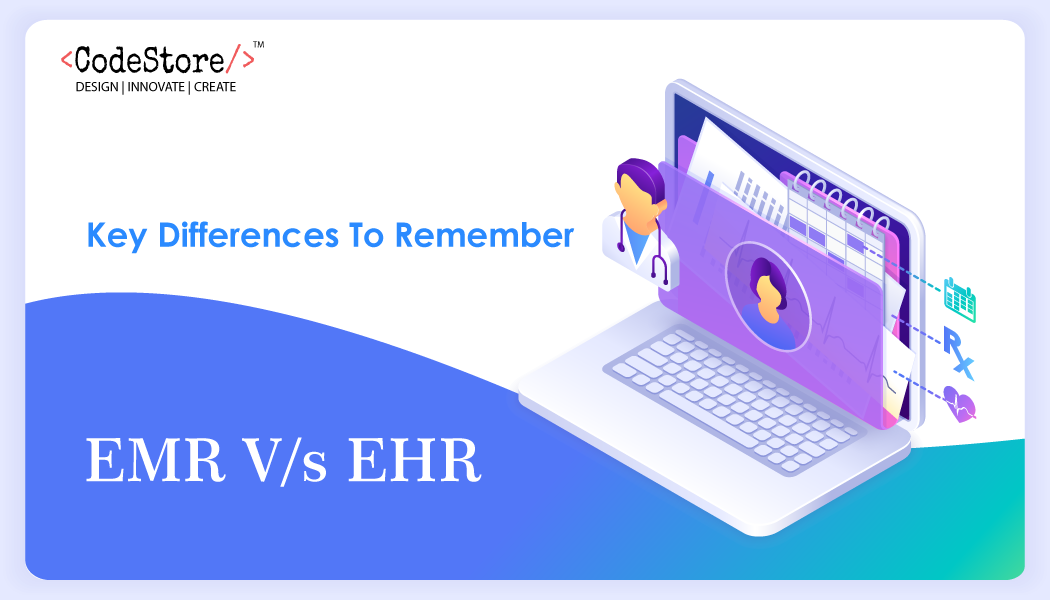Introduction
In the last few years, the healthcare industry has undergone many new changes and has adapted many new things. A case in point is the healthcare industry, where many people working in medical practices hear the terms “EHR” and “EMR” being bandied about but are not quite sure what they refer to or what the differences are between the two.
Electronic medical records (EMR) are digital versions of the patient’s paper charts that have been crucial to medical practices. Electronic health records (EHR) are more comprehensive. They include tools that improve your practice’s electronic prescribing, lab ordering, and telehealth capabilities.
As such, EHRs make several important medical practice functions available from one interface. With this setup, you can view a patient’s full medical history and then immediately pivot to prescribing key medications. You can also communicate within your practice via patient point-of-care tools that record what happens on one day for practitioners working another day to see. EHR interoperability tools also ensure proper communication between separate practices.
In short, EHRs comprise patient charts and the many other tools a practice might use to keep all practitioners and staff alert to a patient’s health and billing needs. (Practice management systems, also known as PMS or PM software, can further facilitate appointment scheduling and medical billing.) However, most medical industry professionals use the two terms interchangeably.

What is an EMR?
An EMR is the digital equivalent of a practice patient’s paper charts and medical records. If your practice implements an EMR system, your platform of choice will contain all your patients’ medical data. You’ll also be able to pull up an individual patient’s chart for analysis before, during, or after an appointment. All information stored within your EMR remains available solely to your practice.
Most medical professionals consider EMRs superior to patient charts since they make tracking a patient’s data over time a much easier proposition. Many EMRs can also sync with remote patient monitoring tools to give practitioners real-time medical updates on patients who require more hands-on care. Most EMRs can also scan your charts to identify patients who need checkups, screenings, or other appointments. The result is a practice that operates with no gaps.
What is an EHR?
An EHR system does everything an EMR does while positioning your practice for growth and better communication internally and externally. Through an EHR, you can build a continuous, timestamped record of patient care for all your nurses, doctors, and other medical staff to reference. You’ll also get interoperability tools that enable people outside your practice – including the patient – to access medical data.

The use of an EHR results in a practice that’s ready to involve as many people as necessary in a patient’s care. EHRs allow you to seamlessly send patient data from your practice to specialists involved in your patient’s care. They also ensure that no data gets lost if your patient moves away from your region and needs to find a new primary care doctor. These features make EHRs highly patient-centric, whereas EMRs are more practice-centric.
With EHRs, you can also implement a telehealth program and prescribe medications and lab tests without printing any paper. Should you prescribe medications that could lead to harmful interactions, most EHRs will notify you before you complete the prescription. Without these alerts, you could accidentally put your patients in danger.
When to use an EHR vs an EMR?
Using EHR software today means having an interoperable platform that connects with all points of care a patient might encounter. EHR usage improves the quality of patient care and the overall patient experience, whereas EMR usage may only achieve the former. EMRs are unquestionably an improvement over paper patient charts and medical records, but they only address the gaps in paper records. EHRs, on the other hand, improve the entire patient experience through all the aforementioned features and tools.
Today, regulations from the Centers for Medicare & Medicaid Services have incentivized healthcare organizations to adopt interoperable medical software platforms, which has led to an increase in EHR adoption and a reduction in the use of EMRs.
Advantages of EHR Software vs EMR Software

Easier specialist involvement or patient transfer to new facilities
With paper records and EMRs, your patients will need to bring hard copies of their medical records to specialist appointments. The same holds true if your patient switches primary care providers for any reason. EHRs solve this problem: Their interoperability tools get the patient’s data into other practices’ hands in HIPAA-compliant ways.
A clear timeline of the patient medical history
Since EHRs and EMRs are fully digital, every entry in them displays an exact date and time. More importantly, these electronic systems can arrange all data chronologically with just a click or two. This function enables your nurses and practitioners to quickly understand the patient’s current medical needs and provide appropriate care.
Thorough data security
Speaking of HIPAA, all top EHR systems are entirely HIPAA-compliant. Their data safety and security practices meet federal government standards, so you don’t have to worry about breaching a patient’s privacy as you ensure their comprehensive care. These data safeguards make electronic patient data much tougher for bad actors to access than paper records.
Patient involvement
EHRs typically allow the patient access to their own medical data, which is nearly impossible with paper records and still quite difficult with EMRs. This access can come in handy if the patient needs to take some time at home to think about their treatment options for a serious medical issue.
No paper clutter or mismanaged records
Paper records just don’t cut it in fast-paced, emergency-heavy, high-volume spaces such as hospitals and medical practices. The digital records of both EMRs and EHRs solve this problem. They eliminate paper clutter, and since the practitioner’s notes are typed rather than handwritten, they’re less likely to be misunderstood. At this point, digital recordkeeping is the industry standard.
Speech-to-text
EHR and EMR systems both allow speech-to-text when you’re taking notes during patient encounters. This function has numerous benefits, including more accurate charts and streamlined medical billing.
What CodeStore Can Do?
CodeStore Technologies is a leading mobile and web app development company with a special focus on providing the best and most efficient digital transformation services to clients of various sizes. We are known as a leading healthcare software development company in India, Canada, and the USA. Our skilled developers are here to help healthcare organizations in developing the next generation EHR and EMR software.
We have a team of skilled Dot net developers, React Native developers, Angular developers, and many other latest tech stacks. With the help of them, we are here to help you.
If you have any questions or you are looking for a development partner who can help you in developing your dream healthcare software then feel free to reach us at: sales@codestoresolutions.com. You can also call us at:- +91 8069195500 | +1 (302) 520-2820

